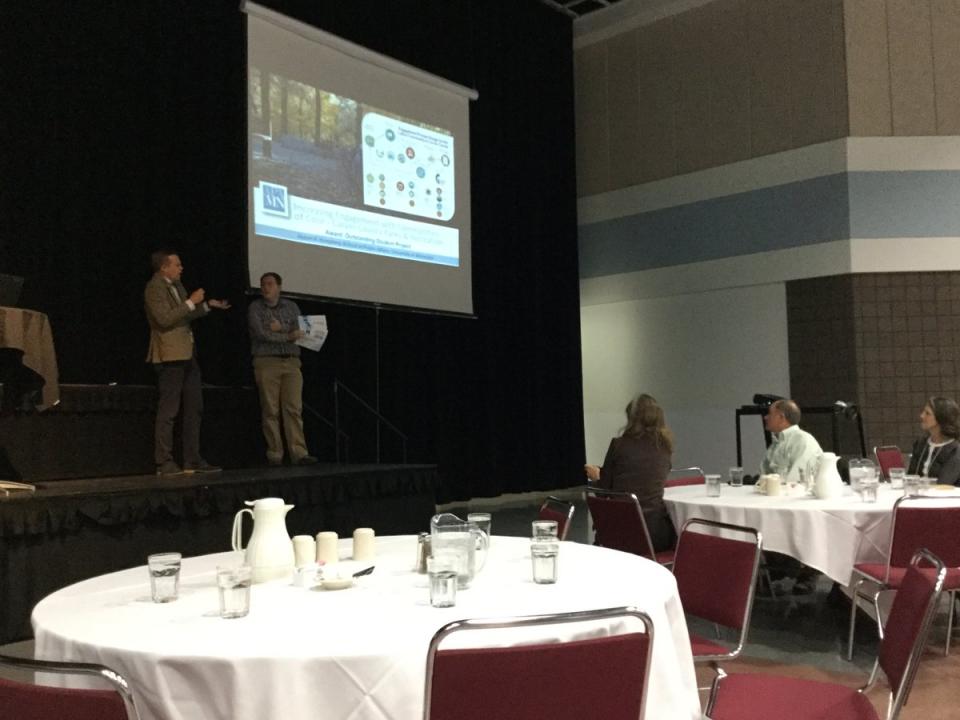The American Planning Association’s Minnesota Chapter (APA MN) has recognized five University of Minnesota students with the organization’s Outstanding Student Project Award for their Resilient Communities Project–sponsored capstone project, which they completed in partnership with the Carver County Parks Department last spring.
Humphrey School of Public Affairs students Chuck Demler, Kaela Dickens, Joseph Hartmann, Laurel Nightingale, and Kalli Perano were recognized at the 2016 Upper Midwest Regional/APA MN State Conference during an awards ceremony on September 28. The award recognized their collaboration with Carver County Parks and Trails Supervisor Sam Pertz to identify strategies to better engage communities of color in County park planning. Humphrey School professor Kathy Quick advised the students on the project, which was completed this past May as part of a year-long RCP–Carver County partnership.
The team has been recognized previously for their efforts, having received RCP’s Best Project Award and the Humphrey School of Public Affairs’ Diversity Paper Award for Best Paper.
“The students really thought critically about equity,” said Quick. “Equity can mean a lot of things when you’re looking at diversity and inclusion in the parks system.”
The final report, titled “Increasing Engagement with Communities of Color: A Toolkit for Carver County Parks and Recreation,” identifies barriers to engaging people of color and new immigrants to Carver County in planning and development of County park facilities, and outlines specific recommendations County staff can use to foster better relationships with communities of color in the area.
The student group took an innovative approach to the project by framing their analysis and recommendations around a consideration of what equity means in different contexts. “It is important to understand what we really mean when we talk about equity and diversity,” said Nightingale.
Students recommended beginning the relationship-building process through “points of entry,” by working through organizations with which residents of color and new immigrants already have established relationships. To facilitate such outreach, the students provided a list of possible entry points, a rationale for why these organizations were selected, and key contacts within each organization.
Many of the students on the capstone team had previous experience in the area of community engagement, something Demler says contributed to their success. Even with their previous engagement experience, however, the students gained new perspectives from working on the project.
“I thought I already knew how to do engagement,” said Nightingale. “I learned so much more and have a richer understanding” of engagement as a result of the project.
Quick also believes that this project helped the students see that they have a real role to play in advancing equity through their professional work, as evidenced by a recent invitation to present their report to representatives from the Minnesota Department of Natural Resources.
